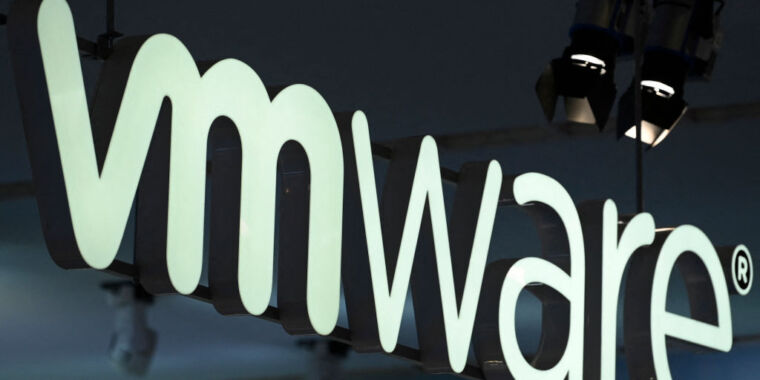You will own nothing, and you will like it.
lol, make me
I’m super glad I recently made the switch to XCP-ng for my home lab hypervisor.
I mostly use lightweight virtualization with containers and jails at home. I have one BHyVe VM, but I plan to eliminate virtualization completely. It’s a waste of resources for my setup.
SaaS is a scam
Software as a scam
Broadcom is one of the worst fuckin suppliers
One of?
You have to leave room for Oracle.
Solarwinds; never forget.
Say what you will about Oracle; at least VirtualBox is open source.
Broadcom is really really bad, but there’s a lot of competition in that space.
Proxmox is a decent option, or just use kvm provisioning directly with ansible.
So many companies can’t do this.
Proxmox is not a complete replacement for VMware. Proxmox still does not have a distributed resource scheduler or distributed power management for it’s cluster which means the only time a VM will move between nodes is if a node goes down.
There’s no official support for VDI within proxmox and all the third party tools are janky at best, definitely not ready for enterprise level deployments.
Nvidia does not officially support vGPUs on proxmox. You can get it working but it’s definitely not something you’d want to run on production.
I think a lot of enterprises are going to look at RHEV and Proxmox now. Broadcom will squeeze so little out of VMware thinking they can convert per seat licenses, it’s baffling to me why they decided to do this. Do all these companies want to spend $2 to make $1 all the sudden?
Watch: in a year they’ll offload it to private equity.
I think a lot of enterprises are going to look at RHEV
I don’t think so, because:
Development of RHV has ceased and as of August 2020 the product is now only receiving maintenance updates, with extended life phase updates provided until 2026.[8] The successor to RHV is Red Hat’s OpenShift container platform.
https://en.wikipedia.org/wiki/Red_Hat_Virtualization
Proxmox
I’m no expert btw, but from what I understand (from speaking with others and researching for my own homelab setup) is that LXD/Incus is now the preferred solution over Proxmox. LXD is faster, the CLI is very good, it has a huge library of ready to run Linux distro images which is convenient, and it runs on top of your favorite distro, which makes it easy to install/setup, more flexible, and more compatible (Proxmox runs an old and custom kernel, which may not be fully compatible with new hardware).
Watch: in a year they’ll offload it to private equity.
and that’s the kiss of death for any company
The enshittifications will continue until morale improves
but just think of the brief moment of incredible profits before people migrate to other options.
I first deployed ESX back in 2003 and from then on I was a huge fan of VMware. So, watching Broadcoms changes unfold is a little sad.
What i really wanted to ask is, for meduim to large enterprises that want on-prem infrastructures what are their options nowadays? I don’t work in this area any more so I’m out of touch.
Linux KVM. I’ve used it on bare metal production servers for years.
for meduim to large enterprises that want on-prem infrastructures what are their options nowadays?
Proxmox probably comes the closest, there’s also…HyperV (gross)
My bet is Nutanix is going to grow a lot over the next few years.
deleted by creator
Your option is Azure or AWS…
/s
Broadcom used to be a worthwhile company, but now their whole M.O. seems to be buying up mature solutions and price-gouging the companies that rely on those solutions. They sell off the parts they can’t price gouge with and then the solutions stagnate. They did it with CA, and again with Symantec, and now it’s VMware’s turn.
Broadcom’s business was making chips and this is a horizontal move into new territory. Baffling.
Good thing I just dumped them for proxmox.
deleted by creator
They won’t
They could kill VMware while trying though. Seeing a worthy competitor rise through the ashes would be nice.
Ah another company ruining the company they just acquired
Is anyone really shocked? They publicly stated months ago that 70% of VMware’s profits come from Fortune 500 companies and that’s what they would focus on.
I tasked my VAR to find out what our pricing is going to look like in 2024 when our support agreement is up. They said VMware is a mess right now, do t expect a response soon. I need time to migrate and decide if I’m sticking with on-prem or moving god damn workloads to some cloud. This is a fucking shitshow. I fucking hate shareholders.
decide if I’m sticking with on-prem or moving god damn workloads to some cloud
Well, if you really want to burn through a lot of money really fast, and don’t want to think of any other option at all, then yeah.
In my experience, Citrix offers a pretty viable alternative with xen if you want to stay on-prem
We just renewed support for our socket based perpetual licences for 3 years. This gives us plenty of time to find an alternative solution.
I love VMware, but man are they being short sighted with this one.
Anyone know if QEmu or any other solutions 3D support is near or as good as VMWare Workstation yet?
Gpu passthrough, if you can do that will always be most performant.
If you want the qemu/kvm equivalent of what vmware workstation does, than look into virtualgl, which is very good (a wine port on android uses this to get good performace without direct access to host hardware), but it still may not be everything you want.






















